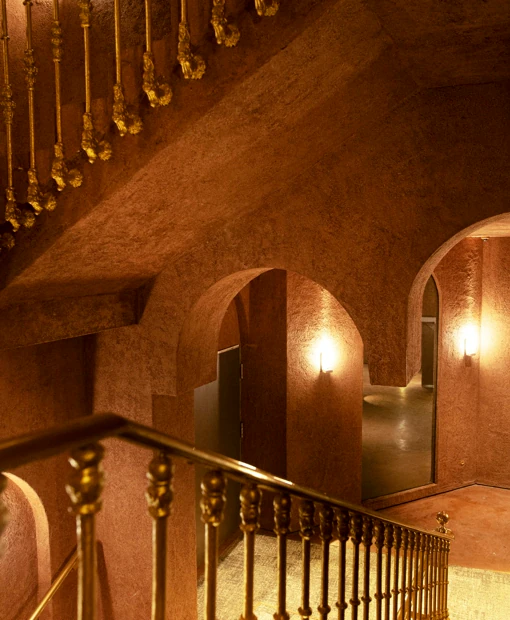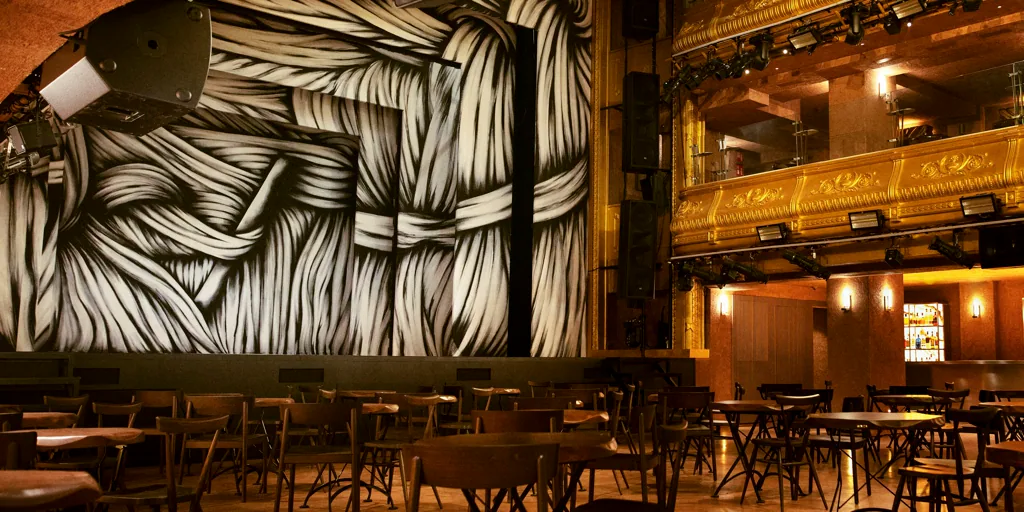A concert by Lori Meyers inaugurated last Tuesday the new stage of slavic theater, who leaves her days as Joy Eslava behind with a spectacular comprehensive makeover that left fans of the group from Granada speechless. And it is that now, when entering through the portal of number eleven of Arenal street, what the visitor finds is a completely different room, ‘reimagined’ from top to bottom by a prestigious designer such as the French Philippe Starckauthor of reforms of many large hotels, restaurants, boutiques and shopping centers in the world, and of buildings as important as the Baccarat Museum in Paris or the cultural center La Alhóndiga in Bilbao, as well as winner of
awards and recognitions such as the Chevalier de l’Ordre des Arts et des Lettres de France.
Starck’s inspiration for this project is in flamenco, “which comes from the land, almost from the desert”, explains the designer. “It is a fire that keeps you warm and fascinated. Since the emotion of flamenco is so pure, so naked, I had to do as little as possible, radically cover everything with red mud. The decoration is weak compared to the absolute beauty and art of flamenco. I created the bare minimum; a cave with candle-like lights to welcome the fire of flamenco».
Preserving the original architectural structure and several key heritage elements such as the moldings, the railings, the original patterned vaulted ceiling and the wooden medallions, Starck has made significant alterations to the historic building, such as the construction of a acoustic shell inside the theater to provide better sound insulation to the room. The previous finishes have been subtracted and replaced by primary and natural materials, such as Pastellone -an ancient material created in Ancient Rome- in walls and ceilings, mortar for the floors and handmade terracotta for the bathrooms, and Goodnight lamps have been installed. —designed by Starck and edited by the Italian company Kartell—, inspired by traditional candles, which seem to float in the grotto-like spaces guiding visitors through the theater. On the other hand, on the outside, the façade has been rebuilt as it was before the 1980s, replacing the brown-painted mortar with granite.
In this way, Starck has cleaned the existing building of the various stratifications accumulated over time to get to the essential, to its heart, to its core, “to this central fire, to this primitive cry that is flamenco”, says the designer. “No decoration, no frills; just a violent and radical cave of red earth, revealed by the light of the magical flames. Now Teatro Eslava is a grotto of red earth that shines with a thousand modern candles. This voluntary deprivation welcomes in its center the fire of primitive crying that is flamenco. All of Spain, all of Andalusia, all of history concentrated in a gesture, a sound, a force. This magic is protected by a hypnotic scenic framework, the work of Ara Starck; Violent abstraction, reflection of the human drama. Teatro Eslava is a complete and monolithic work of art to the eternal glory of flamenco».
Indeed, her daughter Ara has also participated in the project by painting the canvases of the Eslava Theater “like waves in a violent wind,” the artist describes. «As if we discovered, inside a cave, a storm a few seconds before its unleashing. An exaltation contained by a single nail.

Teatro Eslava thus begins a new story that will continue to add chapters to the history of Madrid. The space —already converted into an institution of the city’s cultural legacy— has witnessed numerous milestones over the last 150 years and has become an icon of freedom and rebellion; one that saw the birth of authors such as Federico García Lorca and welcomed some of the most relevant figures of the political, artistic and social scene of the 20th century. In its last stage —begun in 1981 and led by Pedro Trapote, businessman and key figure in nightlife in the capital—, Eslava became the home of a multitude of artists and ‘socialites’, and now, after the pandemic, it returns with a completely new vision that includes two fundamental proposals.
One is OléOlá, a new concept of flamenco musical created by the dancer and choreographer Cristina Hoyos —to date, the most awarded of all time— and the three-time José Carlos Plaza National Theater Award winner. Ten years after working together for the last time, two of our most famous figures in theater and contemporary flamenco present us with a show in three acts and in a ‘show-dinner’ format with a gastronomic proposal devised by Ansón & Bonet. On the other hand, there will be a live music offer focused on a wide variety of national and international genres, as well as several clubbing projects full of contrasts and aimed at a heterogeneous audience that will make use of the avant-garde technical infrastructure that it has. the room, with 100 square meters of LED screens, a sound with power of 40,000W, robotic spotlights and 50 motors.
–


